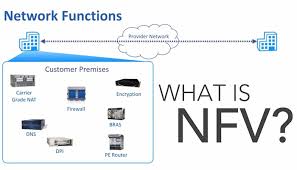NFV Fundamentals: Virtualizing Network Functions in the Cloud Era
telcomatraining.com – In today’s rapidly evolving digital landscape, the need for flexible, scalable, and efficient network infrastructure has never been greater. Traditional hardware-based network models are increasingly unable to meet the demands of modern enterprises. Enter Network Functions Virtualization (NFV) — a groundbreaking approach that transforms how network services are deployed and managed. This article explores the fundamentals of NFV, its benefits, architecture, and its vital role in the cloud era.
What is NFV?
Network Functions Virtualization (NFV) refers to the decoupling of network functions from proprietary hardware appliances. Instead of running services like firewalls, load balancers, or routers on dedicated hardware, NFV allows these functions to operate on standard, commodity servers. This transformation is enabled through virtualization technologies, such as hypervisors and virtual machines, that replicate hardware-level functionality in software.
Core Components of NFV
NFV architecture typically consists of three main components:
- Virtualized Network Functions (VNFs): These are the software instances that perform specific network functions, such as intrusion detection or traffic management.
- NFV Infrastructure (NFVI): This includes all physical resources (compute, storage, and networking) and virtualization layers that support the execution of VNFs.
- NFV Management and Orchestration (MANO): This layer handles the lifecycle management of VNFs and the orchestration of resources.
Each layer plays a vital role in ensuring that virtualized services are delivered with the same, if not better, performance and reliability as traditional hardware-based systems.
Benefits of NFV in the Cloud Era
- Scalability and Flexibility
NFV allows network services to scale up or down dynamically, depending on user demand. This elasticity is especially valuable in cloud environments where workloads vary frequently. - Reduced Operational Costs
By eliminating the need for expensive hardware and physical maintenance, NFV significantly reduces capital and operational expenditures. - Faster Time to Market
New network services can be deployed rapidly, often within minutes, rather than the weeks or months required for traditional hardware setups. - Enhanced Innovation
NFV opens the door to rapid experimentation and deployment of new services, driving innovation in areas like 5G, IoT, and edge computing.
NFV and Cloud Computing: A Powerful Combination
The synergy between NFV and cloud computing is revolutionizing how businesses operate their networks. Cloud platforms provide the perfect foundation for NFV by offering on-demand resources, high availability, and global reach. Service providers can leverage cloud-native architectures to deploy VNFs at scale, ensuring performance and reliability even in the most demanding scenarios.
Moreover, NFV supports multi-cloud and hybrid-cloud strategies, enabling organizations to optimize costs and improve service delivery across diverse environments.
Challenges to Consider
Despite its numerous advantages, NFV adoption also comes with challenges:
- Performance Overhead: Virtualization introduces some latency, though modern hypervisors and hardware acceleration techniques are mitigating this issue.
- Complexity in Management: Orchestrating multiple VNFs across distributed environments can be complex, requiring robust automation tools and skilled personnel.
- Security Concerns: Virtualized environments expand the attack surface, making it crucial to implement strong security policies and monitoring solutions.
Conclusion
Network Functions Virtualization is reshaping the networking landscape by replacing rigid hardware-based models with agile, software-driven solutions. In the cloud era, where speed, efficiency, and adaptability are paramount, NFV serves as a cornerstone technology that empowers organizations to build modern, resilient networks.
By understanding the fundamentals of NFV, businesses can unlock new levels of operational efficiency, reduce costs, and stay competitive in an increasingly digital world.







